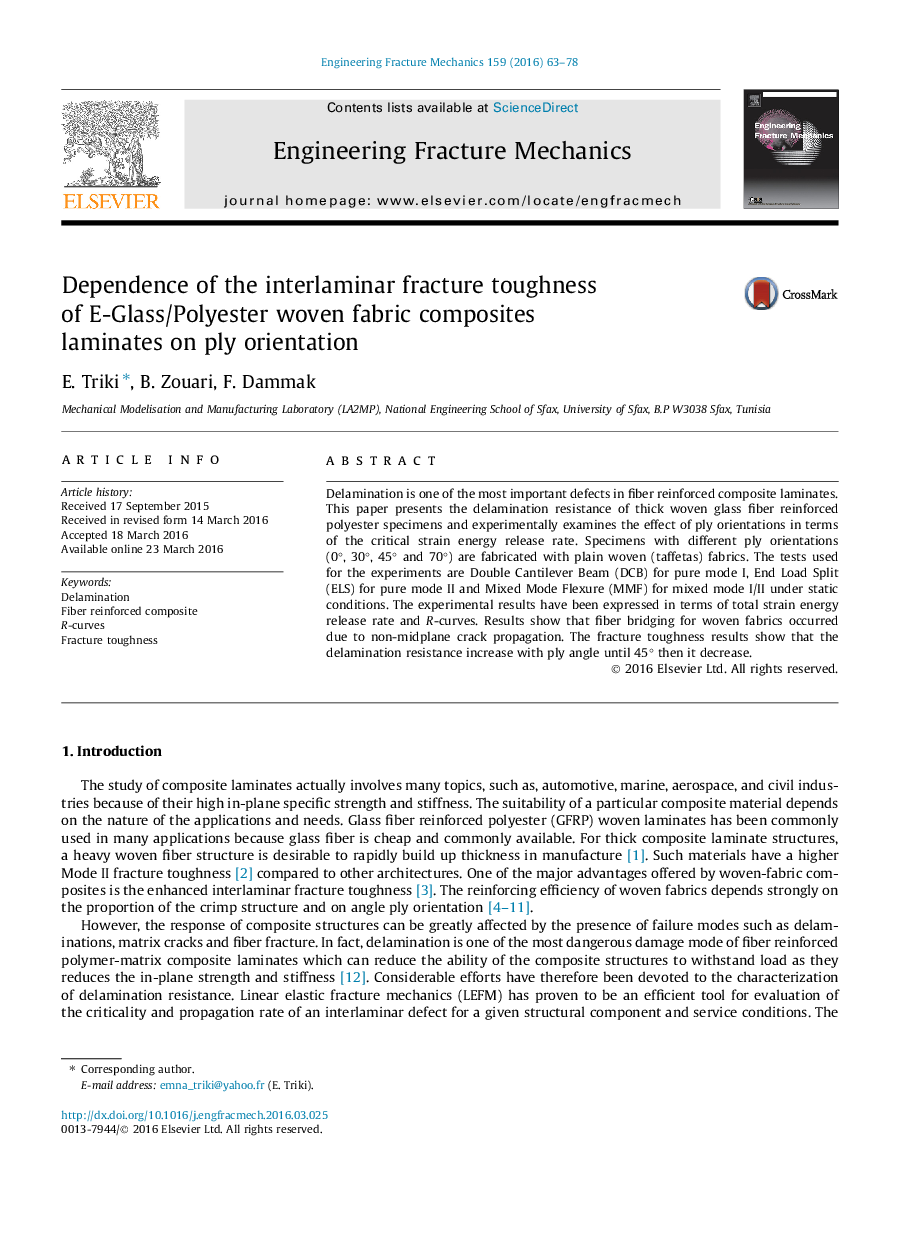| Article ID | Journal | Published Year | Pages | File Type |
|---|---|---|---|---|
| 770339 | Engineering Fracture Mechanics | 2016 | 16 Pages |
•Delamination resistance of thick plain woven glass fiber composite is presented.•The effect of ply orientation in strain energy release rate is investigated experimentally.•The R-curve effect is discussed.•Good agreement was found between the experimental results and calculations of semi-empirical criterion.
Delamination is one of the most important defects in fiber reinforced composite laminates. This paper presents the delamination resistance of thick woven glass fiber reinforced polyester specimens and experimentally examines the effect of ply orientations in terms of the critical strain energy release rate. Specimens with different ply orientations (0°, 30°, 45° and 70°) are fabricated with plain woven (taffetas) fabrics. The tests used for the experiments are Double Cantilever Beam (DCB) for pure mode I, End Load Split (ELS) for pure mode II and Mixed Mode Flexure (MMF) for mixed mode I/II under static conditions. The experimental results have been expressed in terms of total strain energy release rate and R-curves. Results show that fiber bridging for woven fabrics occurred due to non-midplane crack propagation. The fracture toughness results show that the delamination resistance increase with ply angle until 45° then it decrease.
